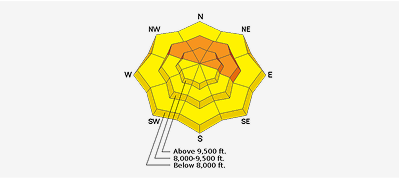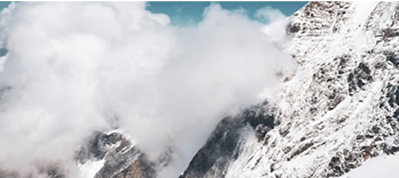With the Strong winds that were observed and recorded at the upper elevations, natural wind slab avalanches were very likely today on steep aspects on the upper half of the compass. This problem obviously increased today with the winds and new snow. These may still be suspect on Monday, especially when considering the widespread facets that were reported at the old snow/new snow interface just prior to this event. This most recent prestorm/facet/surface layer, along with the previously cited facet layer associated with the rain and m/f crusts, may continue to provide multiple complicated interfaces out there under these potential wind slabs.
Danger for Sunday appeared to be hitting Considerable in the upper elevation areas that were receiving the strong winds and intense loading. Mid slope terrain features may be most suspect due to the high wind speeds. In other areas the Danger was a widespread Moderate with Storm Snow Slab avalanches reactive on many steep slopes with angles > 35 degrees. For Monday, if the winds die down and the snow abates as forecast, the Danger should be Moderate with all the above cited problems. And with the continued significant warming slated to occur with highs in the upper 30's at 9000 feet, Wet Loose avalanches will be another thing to consider. Plus, if the sun comes out for any period, there may be a cycle of natural Wet Loose activity in the new snow. If this occurs, Considerable is a better Danger rating.
Finally, if we continue to see the facet layer that has been associated with the rain and m/f crusts be a player in any avalanches, it may be wise to include Persistent Slab back into the current avalanche problems list.






